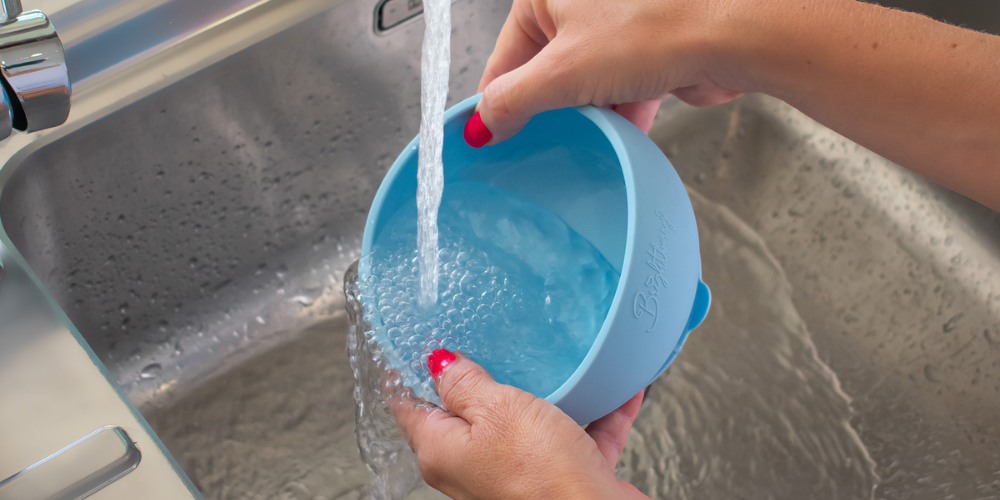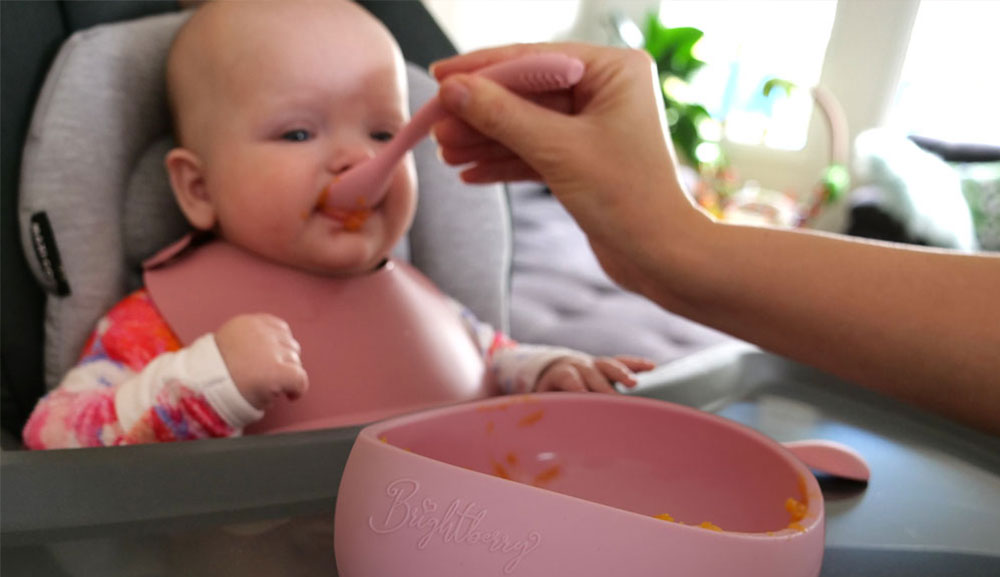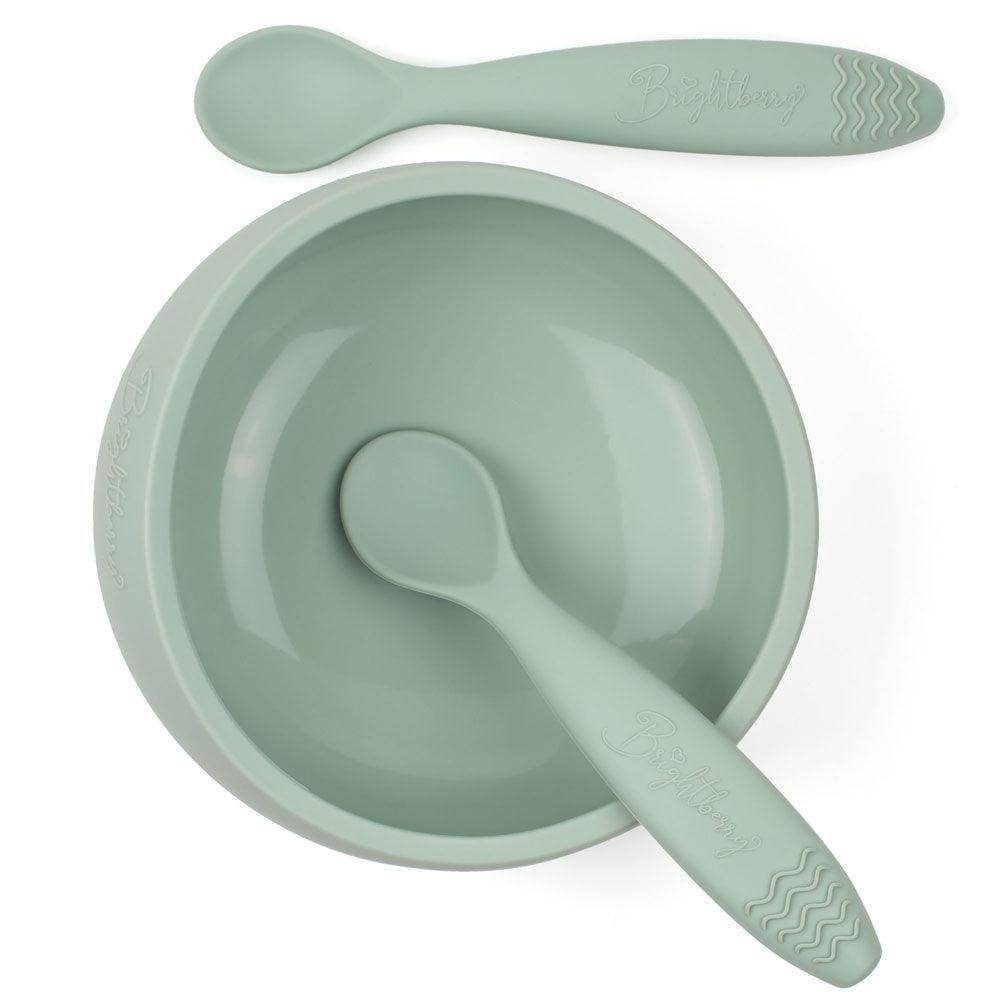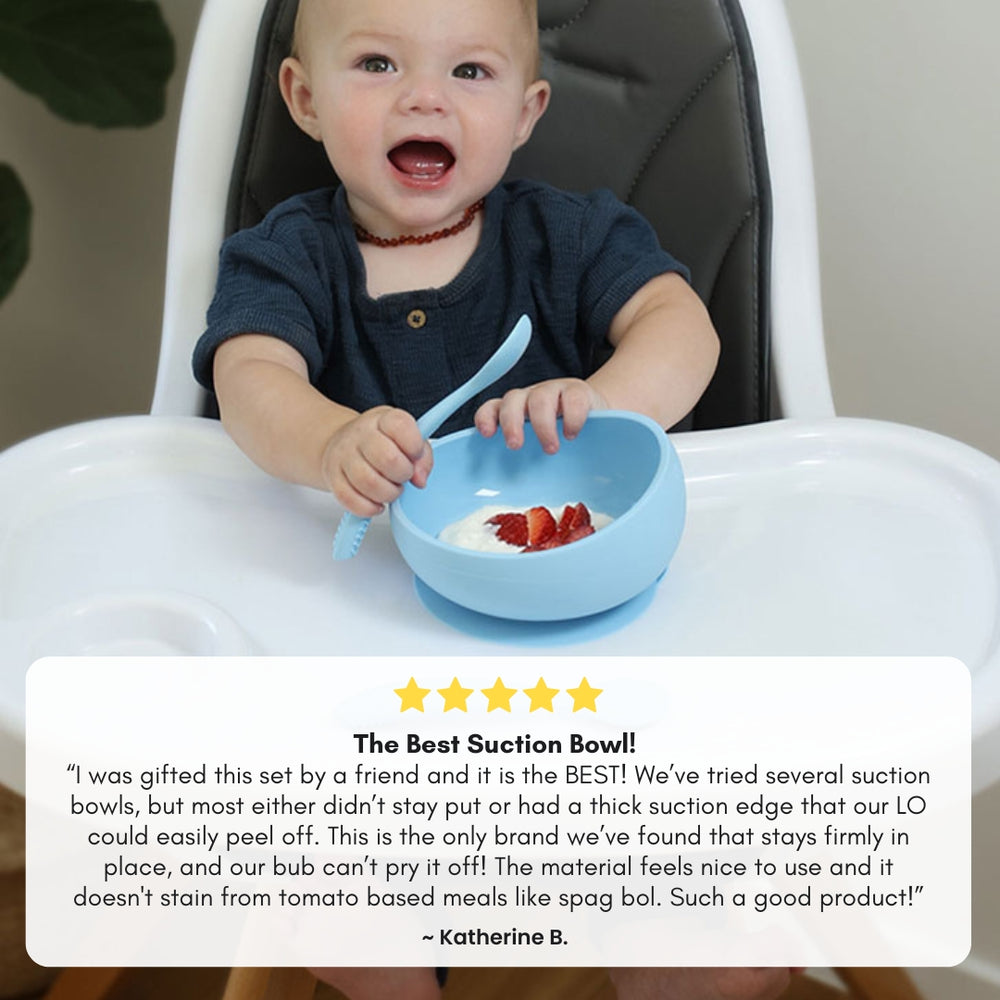4 Effective Ways to Remove Smells from Silicone Tableware
4 Effective Ways to Remove Smells from Silicone Tableware
Parents love silicone tableware, especially silicone bowls, for its safety, durability, and vibrant designs. However, silicone can sometimes absorb strong odours, making it challenging to keep your little one’s feeding essentials fresh and odour-free. This guide will cover removing smells from silicone bowls and tableware to prevent mould buildup and stains.
1. Choose the Right Dishwashing Detergent
The best strategy is to prevent odours from developing in the first place. Choosing the right silicone tableware and dishwashing detergent can help keep your silicone tableware fresh and free from lingering soap smells.
Tips for Choosing the Right Detergent:
- Opt for Mild, Fragrance-Free Detergents: Silicone can absorb strong scents from traditional detergents. Choose eco-friendly, unscented options to avoid this issue.
- Avoid Harsh Chemicals: Avoid detergents containing bleach or other harsh chemicals, which can break down the silicone over time.
- Regular Washing: Wash your silicone items regularly with a suitable detergent. If odours persist, rewash them using an unscented detergent to eliminate any remaining smells.
2. Baking the Odours Away
Using heat to eliminate odours is a tried-and-tested method for deep-cleaning silicone tableware. Baking helps release trapped odour molecules and sanitises silicone items, including cups and bowls.
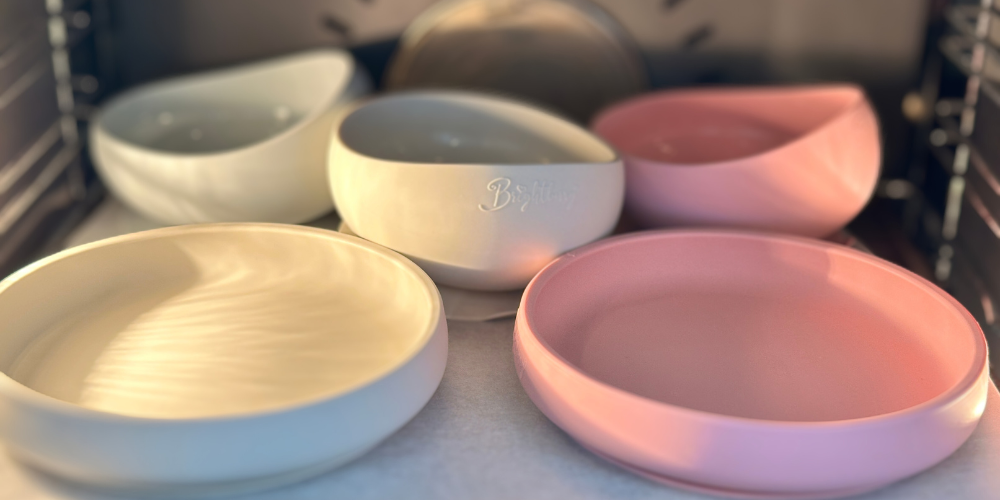
How to Bake the Silicone Tableware:
- Preheat the Oven: Set your oven to 160°C (300-320°F). To protect your silicone, avoid going above 220°C (428°F).
- Prepare Your Silicone Items: Place your clean, dry silicone tableware on an oven-safe dish or a lined baking sheet. Do not bake Brightberry silicone spoons, as high temperatures can damage their insert.
- Bake: Allow the silicone to bake for 30 minutes to 1 hour. This duration ensures that any embedded odours are thoroughly removed.
- Cool Down: Carefully remove the items using heat-resistant tongs and let them cool completely.
- Extra Clean: To make the cooled items even cleaner, wash them with warm water, baking soda, and vinegar.
Why It Works: The heat causes the silicone pores to expand, allowing odour molecules trapped inside to escape. This method is especially effective for solid and persistent odours that other cleaning methods may not altogether remove.
2. Boiling for Quick Odour Removal
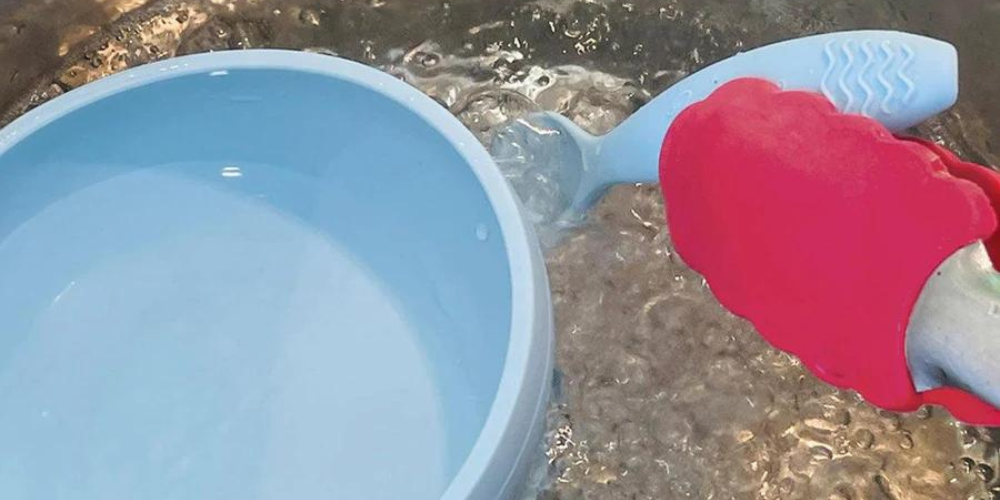
Boiling is another effective way to eliminate unwanted smells and clean silicone tableware, such as bowls, cups, spoons and teething rings. This method utilises heat expansion to release trapped odours and food particles.
How to Do It:
- Boil Water: Bring a pot of water to a rolling boil.
- Submerge the Silicone: Using heat-proof tongs, carefully place your silicone items (including spoons) into the boiling water, ensuring they are fully submerged.
- Boil for a Few Minutes: Let the silicone items boil for about 5-10 minutes. The heat will help release any odours trapped in the silicone.
- Rinse and Dry: After boiling, use tongs to remove the items. Once cooled slightly, wash them with a gentle detergent and rinse thoroughly with clean water.
Why It Works: The boiling process expands the silicone, releasing trapped odours. It’s a quick and effective method, especially for milder smells or when you need a rapid solution.
3. Natural Cleaning with Baking Soda and Vinegar
If you prefer a natural approach, mixing baking soda and vinegar (or lemon juice) can help neutralise odours effectively. This method relies on a chemical reaction to break down and remove smell-causing molecules.
How to remove silicone odours with baking soda:
- Create a Paste: Mix baking soda and vinegar (or lemon juice) equally to form a thick paste.
- Apply Generously: Spread the paste over the silicone tableware, ensuring all surfaces are well-coated.
- Let It Sit: Allow the paste to sit for at least 30 minutes. For stubborn odours, let it dry completely, which may take a few hours.
- Rinse Thoroughly: Rinse the tableware under warm water, scrubbing gently to remove all traces of the paste.
Why It Works: Baking soda is a natural deodoriser. Vinegar or lemon juice helps to break down and neutralise odours. This method is ideal for those who prefer a non-toxic, eco-friendly cleaning solution.
Common Mistakes to Avoid When Cleaning Silicone
When caring for your silicone tableware, it’s essential to avoid some common pitfalls that can lead to odours or damage:
Using Harsh Cleaning Agents
Avoid using strong or abrasive cleaners, such as bleach, on your silicone items. These can break down the silicone material and cause it to deteriorate over time.
Tip: Stick to mild, eco-friendly detergents to protect your tableware.
Storing with Strong-Smelling Items
Storing silicone near strong-smelling items like cleaning supplies or scented candles can cause it to absorb those odours.
Tip: Keep your silicone tableware in a cool, dry, and odour-free environment.
Ignoring Stains
Ignoring food stains, especially from highly pigmented foods like tomato sauce, can lead to permanent discolouration.
Tip: Clean stains as soon as possible using baking soda and water paste.
Using High Heat on Non-Heat Proof Items
Always check the heat resistance of your silicone products before baking or boiling. Some items may not withstand high temperatures and can become damaged.
Tip: Stick to the recommended temperature limits provided by the manufacturer.
Choosing the Best Cleaning Method Based on Odour Intensity
For Strong, Persistent Odours:
Baking is the most effective method, as the extended exposure to high heat causes the silicone pores to expand, allowing deeply embedded smells to escape. This method benefits odours from pungent foods like garlic or strong spices.
Unlike plastic tableware, silicone can withstand high heat without breaking down or releasing harmful chemicals. For best results, ensure the silicone items are spotless and dry before placing them in the oven, and repeat the process if necessary for extremely stubborn odours.
For Mild Odours:
Boiling or natural methods like baking soda and vinegar are ideal for less intense smells, such as those from lightly scented soaps or mild food residues. Boiling helps to quickly expand the silicone pores, releasing trapped odours. At the same time, baking soda and vinegar paste can neutralise odours through a chemical reaction. These methods are fast and effective for routine freshening up of your silicone tableware.
For Soap Smells:
A mild, unscented detergent helps avoid introducing new scents while cleaning. If soap smells persist, soaking the items in white vinegar and water for 30 minutes can neutralise the odour. For added effectiveness, rinse thoroughly with warm water and allow the items to air dry completely before use. This method is gentle and effective for removing detergent residues that may linger on your silicone products.
Frequently Asked Questions
How do you get the smell out of silicone plates?
To remove smell from silicone plates, bake them in the oven at 160°C (320°F) for an hour or boil them in water for several minutes to release trapped odours.
How do you deodorise silicone cooking utensils?
To eliminate odours, deodorise silicone cooking utensils by soaking them in a mixture of baking soda and water or boiling them for 10-15 minutes.
How do you get the fragrance smell out of silicone moulds?
To remove the fragrance smell from silicone moulds, soak them in a solution of white vinegar and water for 30 minutes and then rinse thoroughly with warm water.
How do you get the smell out of a silicone case?
Remove the smell from a silicone case by baking it in the oven at 160°C (320°F) for 30 minutes or soaking it in a mixture of baking soda and water overnight.



